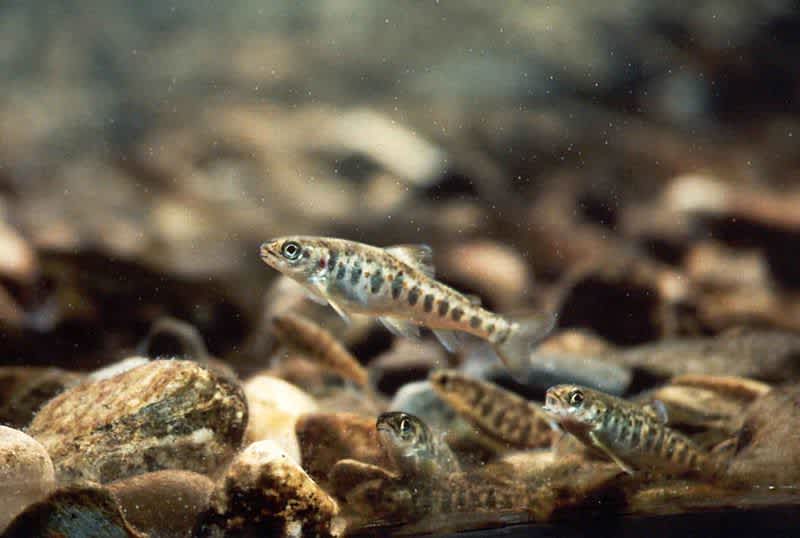Researchers Confirm Wild Atlantic Salmon Are Breeding Naturally in Michigan
OutdoorHub Reporters 11.11.14

Michigan anglers and biologists have been wondering for years about whether Atlantic salmon were reproducing in the Great Lakes, and a recent study seems to have brought good news. Research by scientists at Lake Superior State University (LSSU) has confirmed that Atlantic salmon are breeding naturally in the state’s waters.
“It was very exciting to everyone who was a part of my research to imagine what we had just stumbled upon,” said Stefan Tucker, the LSSU graduate student who published the results of the study alongside professors Ashley Moerke and Geoffrey Steinhart, as well as laboratory manager Roger Griel.
What they had stumbled upon was the presence of wild Atlantic salmon fry in the St. Mary’s River, which divides the Upper Peninsula and the Canadian province of Ontario. It’s also the site of the state’s primary salmon fishery. Michigan officials have been stocking Atlantic salmon in the upper Great Lakes for decades, yet nobody has ever seen these tiny, inch-long fry until now—or at least, not in the past 100 years.
According to the Michigan Department of Natural Resources, Atlantic salmon were once native to Lake Ontario but were extirpated from the Great Lakes well before the start of the twentieth century. Fisheries biologists attempted to bring the species back in the 1970s by planting the fish in the Boyne and Au Sable rivers, but the salmon did not appear to gain much of a foothold. On the other hand, the fishery in the St. Mary’s River soon grew to be one of the best Atlantic salmon fisheries in the region, rivaling those on the East Coast. The population is maintained through an annual stocking program, but biologists have long suspected that the fish were reproducing on their own.
The identification of the salmon fry, with help from Gerald Smith of the University of Michigan, confirmed that the fish were spawning. Of course, what that will mean for fishermen is yet to be seen and Tucker says the extent of the salmon breeding is still unknown. The researchers said that a deficiency of thiamine (or vitamin B1) can also hamper salmon growth in the wild. Hatchery fish are not usually affected by the lack of the vitamin because they are treated with thiamine baths at a young age, yet that is not possible in the wild.
However, LSSU scientists remarked that the study is eye-opening.
“Stefan’s research is a fantastic example of unexpected scientific discovery that is leading to new questions and hypotheses about the life history of Atlantic salmon in the upper Great Lakes,” Moerke said in a pres release.

